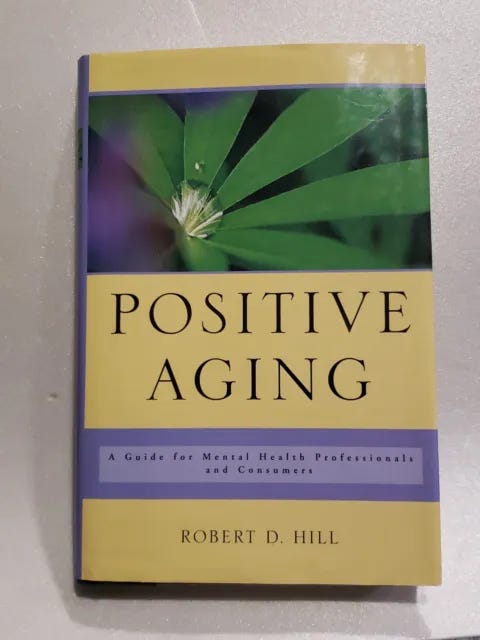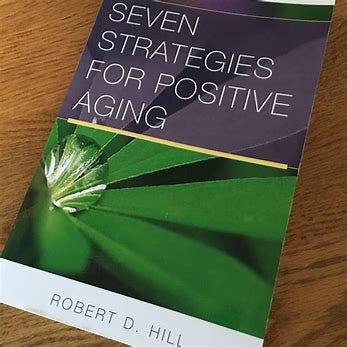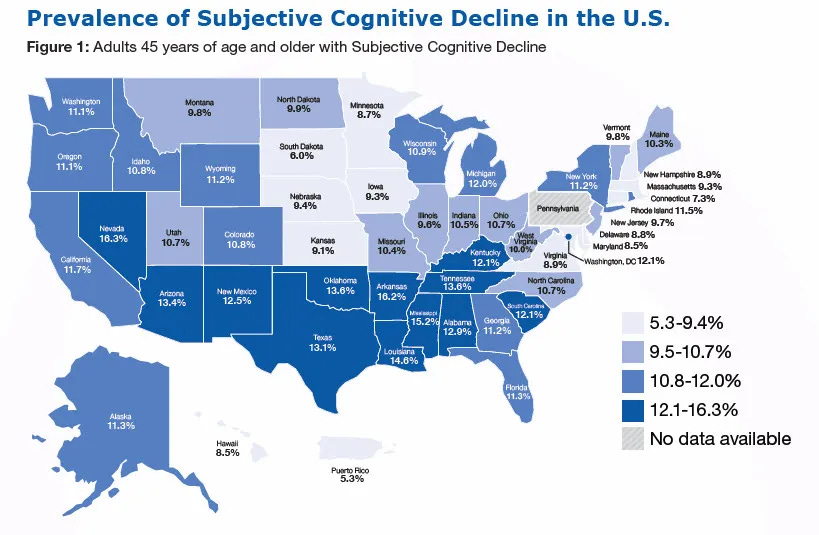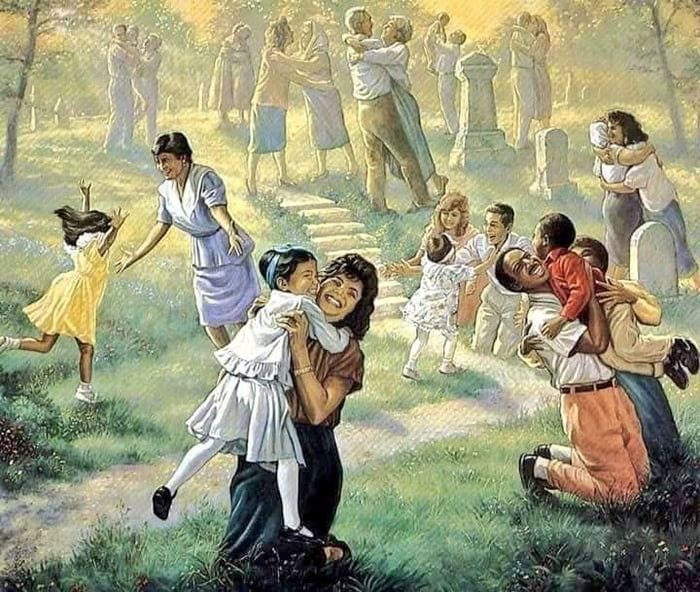POSITIVE AGING
What Everyone Needs to Know
I would be remiss if I failed to write an entry on:
POSITIVE AGING
Wistful thinking?
Define Wistful: having or showing a feeling of vague or regretful longing
When I wrote Positive Aging (2005) and its companion book, Seven Strategies for Positive Aging (2008), it was the mid-2000s; I was a 50-year-old professor. I recall our Dean walking by me in the hallway (the Dean was 68 years old at the time); looking at me, he remarked, “Bob, I’d give anything to be 50 years old again.”
I’m now 67 years old; the Dean, if still alive, would be 86.
We all think wistfully, especially if we are over 60. Indeed, it would be great if we could re-capture youth. The opposite actually happens. We age.
Recently, I began wondering about old “Dean Sperry.” I haven’t seen him in over 15 years. On a whim, I decided to look him up. Did I think of calling him? I have his phone number. Of course not! We never do this nowadays; it’s too direct, personal, intrusive, and not politically correct.
Where did I look?
If you said OBITURARIES, you would be right.
I didn’t find his name in the Obits, which is good. But that’s also when my search ended. I could have searched online, but I’m not in the age cohort that does this. I surmised he dropped off into the abyss of the 85-year-olds—another casualty of advanced aging.
Who was I at 50 years old?
I must have been thinking about aging because I wrote two books on the topic. They took several years to write, I was focused on the subject.
Who am I today?
I’m certainly not who I was at 50.
I’m (now) not motivated to write a third book, Positive Aging, Lives in Progress: Part III. I’ve been approached to do so, but I declined. Why? Because I’m too old, and writing another book about what I’m living through seems too much.
In “After the Session Blog,” I’ve shared bits and pieces of my life. Most of these are scattered chards of living. I share them to demonstrate ideas and concepts.
To describe a comprehensive life-in-progress is hard.
“Lives in Progress” are shaped by innumerable forces within and outside us. For those who believe in it, there is “free agency,” a wild card that is impossible to predict. As I’ve described in a previous entry, “free agency” is the propensity to think or act a certain way by exercising one’s Will.
Will is (and has always been) challenging to describe. But "Will” means we do what we want when we want. Will is directing our own “life in progress.”
Why does this or that person act the way they do?
A tricky question, even for the person making the choice. Even more tricky is how the Will changes with time and with aging. People tell me:
Bob, I’m working on my life plan.”
or
“Bob, I just decided to do this or that.”
or
“Bob, I don’t know why I act like I do.”
These statements suggest that planning and executing a life direction is still being determined. Sometimes, plans happen, which might be called “fortuity.”
Fortuity Defined: noun (Cambridge English Dictionary): 1…the fact of something good happening by chance rather than being planned. 2. A chance occurrence.
The opposite of fortuity would be “hapless.”
Hapless Defined: (Merriam-Webster Dictionary) adverb: 1…having no luck: 2. Unfortunate. Sentence: …hapless beings caught in the grip of forces we can do little about…W.H. Whyte.
We mostly become aware of life plans by looking backward (or retrospectively). That’s what psychologists do all the time in therapy. I’m good at this for others but not so good at it for myself.
One might overlay reason or logic, behavior theories, the psyche, religion or religious beliefs, the Hand of God, Providence, divine inspiration, luck, fate, or destiny to address this issue.
Whatever your slant, describing your life or what (is) or what you think is guiding your life ultimately boils down to connecting the dots. Even in my most difficult personal or professional encounters, whether through friendships, family connections, therapy, or innumerable one-time evaluations, it comes down to connecting the dots.
I believe POSITIVE AGING is just a way to “connect the dots.” By this, I mean that Positive Aging tries to make sense of what might seem random, pathological, everyday, unusual, or disparate living. It is simply a guidepost for aging. Nothing more.
Think about POSITIVE AGING as a guide for thinking about growing old.
How would you connect the above dots?
You could look for patterns.
Do you see a pattern here?
At first glance, the dots seem just well-organized rows and columns. But look closer. Study the dots. As you do, you might notice a pattern. It’s subtle, but there is a pattern.
Can you make out the pattern? It’s not ambiguous (an image of a face or a person’s head). The image is undoubtedly there, but the background is so prominent that it’s hard to discern it from the background.
Look at the FedEx truck below. Do you see the arrow?
Some might recognize it right away (Between the “E” and the “x”). Some might not see the anomaly at first or find it hard to locate until you study it or are cued to where it’s at. It’s tricky until you see it. But, after you see the arrow, it never goes away.
I’d like you to focus on how you disentangle the background from the foreground. This illusion is a metaphor for living. What to pay attention to, What to disregard. Be careful because you might disregard something significant. This is the basis for understanding what “Positive Aging” is (and isn’t). Color is everything in this illusion. Notice the arrow is almost invisible in the typed phrase “FedEx.” The effect only appears with COLOR. Sometimes, background can be a big barrier to understanding any phenomenon.
That’s how aging works. It has always worked this way: subtle, slow, almost imperceptible changes that are hardly noticeable until they are clear and present and staring you in the face.
Take a look at your own hair’s graying. It starts slow and progresses; soon, there is no more black/brown/blonde; all homogenized into gray. Sure, a person can delay it. If so, the sooner, the better, but not forever.
I saw a picture of Ringo Starr (in my AARP magazine), a famous musician now in his 80s. He’s had absolutely no gray hair I could discern. Is this true? Why? Because he has created a misleading image of himself as a person with no gray hair (ostensibly to be younger). When Ringo Starr dies, he won’t work on this task anymore; his hair will turn gray regardless, and it will fall away along with the rest of what was formerly the body of Ringo Starr. It may do so in a casket, but with time, the temporary feature we call a body will be gone after life is gone. Ringo Starr is no more or less than you and me. What will happen to Ringo Star, even with all his fame and fortune, will happen to you, me, and everyone living on this planet.
Here are two pictures of myself. One was taken in 2013 and the other in 2023. Do you notice any changes? I do.
When people think of “AGING,” they usually think of others.
“The 2021 American Community Survey of Aging estimated that 55,892,014 people aged 65 and over lived in the U.S. out of a total population of 331,893,745, or 16.8%.”
When people use words like “Alzheimer’s Disease,” “Osteoporosis,” or “Frailty,” they think of themselves.
“I hope I don’t get Alzheimer’s Disease.”
People worry (a lot) that they might be unfortunate recipients of an age-related disease. Age-related diseases are “things” that aging gives us. They are not pleasant things by any means; sometimes, terrible things that (at least as we define them) might, by some, be construed as biological curses.
Be that as it may, we get disease—everyone does—with time. Who knows why we get a disease? Some medical scholars think they know. But Do they? One thing we do know is that as time passes and age increases, chronic disease becomes more likely, and when we get a chronic disease, we age faster.
We are all time-bound creatures, subject to the power of time, even though we created time or at least the counting and tracking of time. Time, as we know it, always moves forward, and that movement has predictable consequences. Frailty is only one outcome of the body with the forward movement of time. It’s crucial in positive aging to never forget this fact.
ALZHEIMER’S DISEASE
When it comes to age-related memory impairment (MCI or Minimal Cognitive Impairment), to be more scientific, this decline happens to everyone, depending on how long a person lives. Sure, there are exceptions, but very few. We will all suffer from memory decline when we reach our 80s. There is no way to escape this fact.
Get ready for MCI and deal with it because it is an inevitable part of growing old. It is a feature of the aging process that will impact every person living on this planet. This is a foundational point of Positive Aging
What are the elements of Positive Aging?
I list them below in straight-forward terms:
A Positive Ager is a person who:
Can mobilize resources to remain satisfied with life in age-related decline.
Makes lifestyle choices to preserve psychological and physical resources in age-related decline.
Is flexible. Can engage novel strategies to adapt to age-related decline.
Adapts to age-related decline by reframing it through the personal lens of realistic-optimism.
That’s it. Four characteristics of Positive Aging which pivot “entirely” on age-related-decline. And, why NOT? We all do it - decline - we cannot escape it, so why not understand it, embrace it, and plan for it? Make something of it. If one cannot do that, then, at least learn to find a way to make peace and live with it.
One reason I’m not writing a third book on Positive Aging is because I could have condensed the first two books into six simple words (one of these is a compound word):
Deal 2. with 3. your 4. own 5. age-related 6. decline.
I’m making this point strong at the risk of over-simplifying a complex phenomenon.
It’s easier to make this six-word pronouncement than to actually live it.
Based on our substantial capacity to reason symbolically, humans can create alternative universes. One of those is a life without decline, end, stopping, finishing.
We do this with religion (eternal life, immortality, living together happy, floating across a river into Heaven where all our friends and family welcome us; by the way, they are usually all “ages.” Wouldn’t we all be the same age in Heaven?
Would everyone be happy in Heaven? I suppose so; who would create this grand fantasy without making everyone happy? There certainly would not be frail, drooling, clumsy, impaired geriatric people stretching out their decrepit hands saying, “Welcome to Heaven, Sunny?” “By the way, Sunny, we all keep aging here and keep declining too - mentally and physically. This would NOT be Heaven in most people’s minds; it would, for some, be a living Hell, so why would someone generate a symbolic geriatric Universe?
Note the picture below. This painting is titled: “First Moments in Heaven”. It happens to be a Latter-Day Saint (or LDS) painter, Kerolos Safwat, but many other paintings like this depict a fantasized Heavenly scene. What does this picture tell you about aging? This would be an image from a Fundamentalist Religious Perspective.
We also use our symbolic powers. For example, the modern miracle of medicine. When I saw the Ringo Starr picture, I thought, Wow! Ringo Starr looks like he is 40 years old. Of course, Ringo Starr has the resources to engage in this physiological/psychological reconstruction. And he’s done an excellent job, at least as far as the AARP picture goes.
Hopefully, Ringo Starr still understands that he is aging despite his youthful appearance and that he won’t live forever. We can’t see Ringo Starr’s brain declining, which certainly is at a rate equivalent to you and me. This is regardless of how much money and medical magic he puts into his appearance.
Aging is tricky because of DECLINE.
Why?
Age-related-decline pre-disposes people to DISEASE
AND
DISEASE ACCELERATES AND-RELATED-DECLINE
The figure below is one of many depictions of cognitive decline with aging. Along the horizontal axis is age. Along the vertical axis is % cognitive function (100% is excellent cognitive function, with no deficits TO 0% or total cognitive deficit, with no ability to think, remember, reason, hear, or speak). Two features of this graph are noteworthy. First, We all decline. Second, decline accelerates in the presence of a chronic disease. I’m showing Alzheimer’s Disease in this graph, but it happens with every disease—chronic Lung Disease, Cancer, Osteoporosis, Arthritis, and so on. I could fill the rest of this entry with a long list of diseases that all do the same thing. ACCELERATE AGE-RELATED-DECLINE.
I could dive very deeply into why this is the case. In my first book, Positive Aging: A guide for mental health professionals and consumers (2005). I do just that. I present evidence, data, logic to make the point. But, no one really read this part. What they read was that Aging-Decline is coming after ME!
As human beings, our symbolic capability can make us as young as we want for as long as we want until we die. Recall my entry on FANTASY. We fantasize the life we want to live. That is, until we are rudely jolted into reality: a heart attack, a diagnosis of Alzheimer’s Disease, sore and numb fingers and toes signaling the beginning of Arthritis. These are triggers that threaten to obliterate our fantasy world. What happens then?
I’ll leave this question to you. Mostly, people don’t think about decline, so they can’t deal with it when it happens. Positive Agers are happy and content people, but they also try to learn how to deal with decline, or at least address it, before it happens in REALITY. They take preventive steps before the fact, perhaps small steps at first. That was the focus of my first book.
OK, Professor. You’ve made your point. Now I’m aware I will experience age-related decline. I already am. So, What do I do about it?
I suggest you return to the four points I made about who “Positive Agers” are. Think about these four Positive Aging points from a different perspective. Here, I’m describing a:
We are symbolic creatures. By this, we use symbolic processes to escape, run, hide, AVOID, etc. But, we can also recruit symbolic processes to actually “DEAL” with issues, REAL ISSUES. For example, among social factors, modern medicine for example, I think we all agree, along with a healthy dose of public sanitation, improved environmental conditions (air conditioners, slave appliances such as dishwashers, washers and dryers, efficient homes, cars, vacuums), diminished threats of violence (yes, even though things are bad, they were worse historically), etc. These are examples of human beings putting their symbolic capability to work and altering average lifespan by changing the world to take the pressure off people as they age. These are called “Social Supports.”
No one in our day and age will live beyond 127 years. This means we have yet to address the absolute life-span barrier. Yes, we’ve changed average life expectancy and improved quality of life in our later years. These are BIG things we’ve accomplished through environmental support. We all benefit from this support in a gigantic way in the 21st Century. It is so pervasive that I don’t need to provide any examples; look up how many people now live to be centenarians. Currently, there are 722,000 in the USA. In 1950, in the USA, there were 2,300. If you don’t believe it, go look it up. This is a massive change in the picture of advanced aging between 1950 and 2024 in our Western World.
Not only are there more advanced agers today, but people moving through old age through later life can now find a great deal of contentment in age-related decline. Psychologically, there are some straightforward ways to do this.
In my next entry, I will address these. As a preview:
To better understand what age-related decline means for you as an individual. How will I personally decline in old age? And, Why?
Operationalize (or make concrete) what it means to be Flexible. Flexibility is a cornerstone characteristic of Positive Aging. Am I a flexible person? How can I judge? If I’m not, how can I increase my psychological flexibility?
What steps can I take to alter age-related decline without too much effort? Today, it is possible to evaluate and track one’s age-related decline. Some people decline slowly and then drop all of a sudden. Some people drop, go up for a while, drop, go up (sawtooth), then decline slowly, then drop all of a sudden; some people drop, go up for a while, then stay the same until they ultimately die. Some people decline systematically, predictably, almost like a straight 45-degree line that points to the end.
What features of a person predict How they will decline? We know one: Chronic Disease. Yes, chronic disease will always speed up age-related decline. Two important things are worth noting: 1. physical exercise seems to diminish aspects of age-related decline (that’s why I walk daily even though I hate it). 2. A positive mental attitude. Believe it or not, this significantly impacts how you physically age.
Don’t FEAR age-related decline; instead, get curious about it. Pay attention to changes in your world. Notice - become aware - of how you are changing in your aging and how you interpret those changes (we are biased towards noticing decline and fretting about it). There is a reason we have this bias. It’s adaptive. But, it can also be maladaptive. A two-edged sword). NEVER overreact to age-related decline. Become aware of it, understand it, and build your intentions around it. Some decline is worth acting on; some isn’t. Embrace who you are even in personal decline and change in our “ever-changing” world.
These are the issues I will discuss in my next entry.












